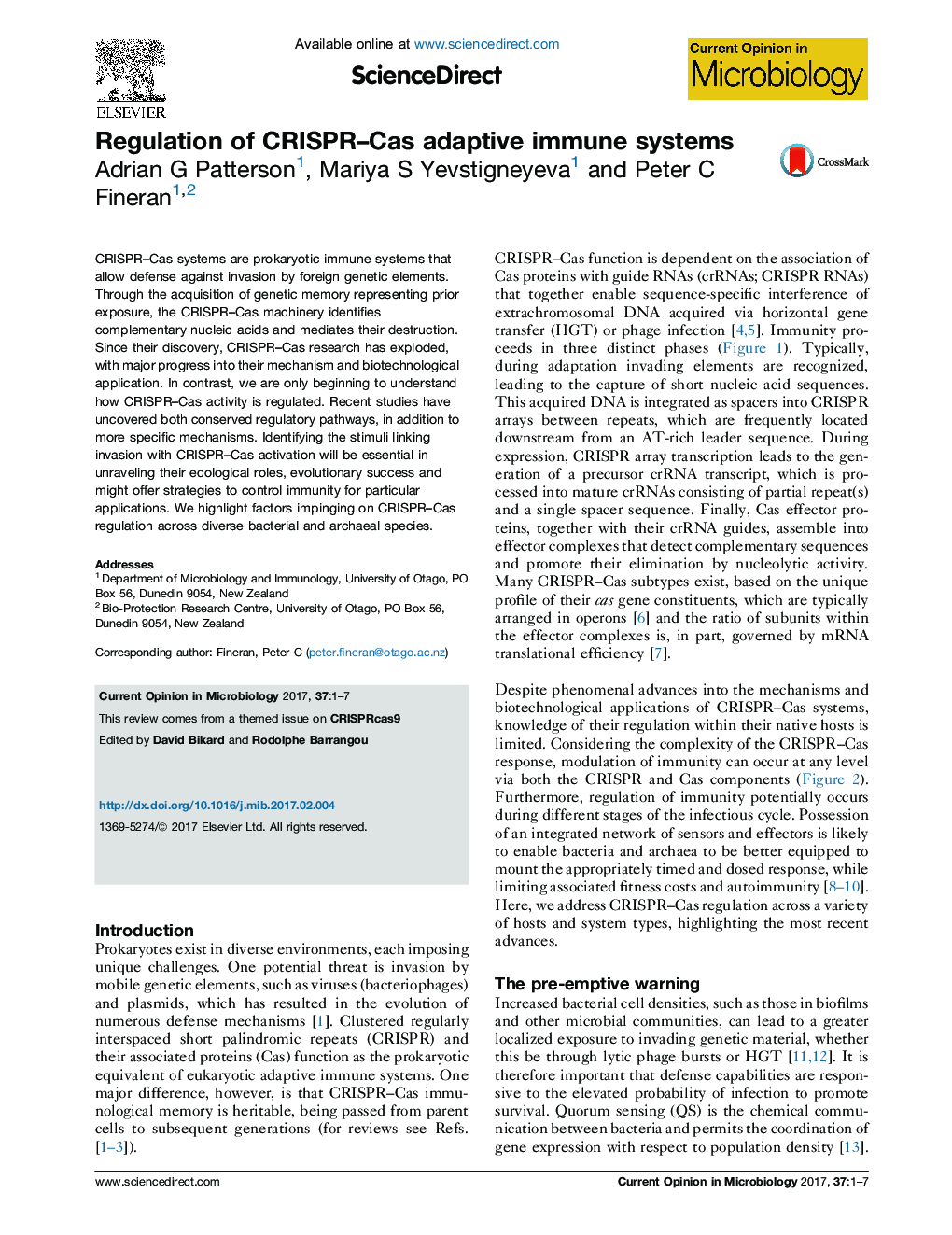| Article ID | Journal | Published Year | Pages | File Type |
|---|---|---|---|---|
| 5671714 | Current Opinion in Microbiology | 2017 | 7 Pages |
â¢CRISPR-Cas systems provide adaptive defense against invading genetic elements.â¢Controlling CRISPR-Cas activity enables optimization of the immune response.â¢CRISPR-Cas regulation involves an integrated network that acts at multiple levels.â¢Regulatory strategies can be conserved between different systems and strains.â¢Diverse regulatory mechanisms exist that likely reflect varied selective pressures.
CRISPR-Cas systems are prokaryotic immune systems that allow defense against invasion by foreign genetic elements. Through the acquisition of genetic memory representing prior exposure, the CRISPR-Cas machinery identifies complementary nucleic acids and mediates their destruction. Since their discovery, CRISPR-Cas research has exploded, with major progress into their mechanism and biotechnological application. In contrast, we are only beginning to understand how CRISPR-Cas activity is regulated. Recent studies have uncovered both conserved regulatory pathways, in addition to more specific mechanisms. Identifying the stimuli linking invasion with CRISPR-Cas activation will be essential in unraveling their ecological roles, evolutionary success and might offer strategies to control immunity for particular applications. We highlight factors impinging on CRISPR-Cas regulation across diverse bacterial and archaeal species.
